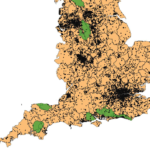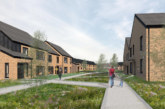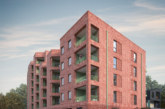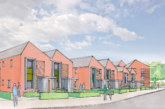The Campaign to Protect Rural England has long campaigned for brownfield development to be brought to the top of the housing development agenda. LABM looks at the findings and recommendations of the organisation’s latest publication State of Brownfield 2019.
Introduction
CPRE (Campaign to Protect Rural England) has long urged the Government to introduce regulations that make it compulsory for local planning authorities to publish a list of brownfield sites, and estimates for their capacity for housing. These regulations came into force in April 2017 and the CPRE was finally able to definitively analyse the number of identified suitable brownfield sites for housing across the whole of England.
Previous estimates
In State of Brownfield 2018, CPRE found that its previous estimates were accurate: suitable brownfield sites identified by local planning authorities have capacity for more than one million homes — and yet this is a minimum, as there are smaller sites that are not recorded. State of Brownfield 2019 — An updated analysis on the potential of brownfield land for housing keeps the understanding of this capacity up-to-date and measures progress towards achieving the Government’s aim of ‘making full and efficient use of brownfield land’. Updated registers were used in researching the report, provided by local planning authorities to assess how brownfield capacity has changed since last year. All the sites on the registers have been assessed by local planning authorities as being ‘suitable’ for housing development, having had regard to their environmental, amenity and heritage value.
Since last year’s report
A number of developments have occurred since the 2018 report was published that affect the brownfield sites. These include:
• The updated national Planning Policy Framework (NPPF), the Government’s ‘planning rulebook’, which was published in July 2018 (and updated again in February 2019). It states that substantial weight must now be given to the value of reusing brownfield land, but still stops short of requiring that suitable brownfield land is prioritised for development over greenfield sites.
• Homes England’s strategic plan was published in October 2018 within which the Government agency agreed with CPRE’s previous analysis, which showed there is capacity for one million homes on brownfield land.
• The National Housing Federation has created a brownfield map to make it easier to locate available brownfield sites in England.
• Local CPRE groups, CPRE London and CPRE Lancashire are developing and using ‘toolkits’ to help local campaigners and community groups identify suitable brownfield sites for development.
How much brownfield?
The 338 published brownfield registers identify more than 18,200 brownfield sites covering more than 26,000 hectares that have been assessed by LPAs as suitable for housing development. The registers show that LPAs have identified sufficient suitable brownfield sites to provide a minimum capacity of more than one million homes.
The report includes a table (Table 2) that shows the number of, area and minimum housing capacity estimates of sites recorded on the LPA brownfield register in 2018 and 2019, including a breakdown for new brownfield sites added in the past 12 months. The findings support previous work that has suggested brownfield land is continually coming forward for redevelopment — it is a renewable resource.
Countryside at risk?
Illustrated across CPRE’s work and that by local campaign groups, valued greenfield sites are under constant threat across the country. An example of this can be found in Gateshead, the Leader of the council, Martin Gannon, has said: “You can’t move in the centre of Gateshead for brownfield sites but housebuilders aren’t interested in building homes in central Gateshead because they can’t sell them for £350,000. At the same time, State of the Green Belt 2018 sowed that land for 6,000 was released from Gateshead’s Green Belt in 2015.”
To counter this some local planning authorities are taking matters into their own hands. Lewis Young, a Councillor on Middlesbrough Council says: “We are seeing great progress on some brownfield sites, but understand that these sites are not attractive to private developers. That is why Middlesbrough Council is launching a ‘Housing Delivery Vehicle’, which will allow us to control the delivery of some of these sites, and build homes for the needs of people, not profit.”
Good brownfield development
There is some brownfield development land in countryside locations, including in the Green belt, and these can and should be developed if they are suitable sites in an accessible location. Just 49 sites with a capacity for 1,773 homes are recorded as being within the Green Belt.
Case study: good brownfield development
In 2018, CPRE Gloucestershire awarded the King’s Lodge Development in Forest of Dean District Council, a Rural Excellence Prize. Funding from the Homes and Communities Agency (now Homes England) was used to help relocate a business to a more suitable location. This unlocked the potential of the site, which is now the site of 92 homes, including 32 for affordable rent and five for shared ownership. CPRE Gloucester praised the development as ‘contemporary in its visual appearance, and with a well-chosen palate of external materials has achieved a distinctive character and sense of place’.
Conclusion
State of Brownfield 2019 — An updated analysis on the potential of brownfield land for housing highlights that by making use of brownfield sites, the homes that are needed can be built in places where they are needed, whilst the countryside is allowed to thrive. Brownfield sites are also often close to where people already work and live, with infrastructure such as public transport, schools and shops already in place. The report features case studies and examples of the potential of brownfield sites, as well as useful and up-to-date data on the state of national picture of brownfield development.
However, the report states that more needs to be done to ensure that brownfield registers deliver on their potential and proactively encourage the bringing forward of suitable brownfield sites for new home construction. The report recommends that national government introduces a genuine brownfield first policy that ensures suitable brownfield land is prioritised for redevelopment over greenfield land in local and strategic plans and in planning decisions.
*The report focuses on the national picture, but associated data tables are available in the annex and on the CPRE website for regional breakdowns of key analysis.
For your copy of State of Brownfield 2019 – An updated analysis on the potential of brownfield land for housing visit the Campaign to Protect Rural England’s website: cpre.org.uk









